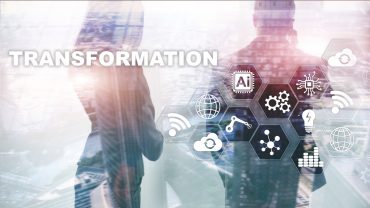
In this week’s real-time analytics news: IBM announced it is acquiring HashiCorp in a move designed to address infrastructure complexity in the age of Generative AI and hybrid/multi-cloud.
Keeping pace with news and developments in the real-time analytics market can be a daunting task. We want to help by providing a summary of some of the important real-time analytics and AI news items our staff came across this week. Here is our list:
IBM has announced it is acquiring HashiCorp, a multi-cloud infrastructure automation company, for $6.4 billion. HashiCorp is known for its Terraform product, an infrastructure automation tool, which is considered an industry standard for infrastructure provisioning in hybrid and multi-cloud environments. The acquisition of HashiCorp by IBM fortifies IBM’s position in the rapidly growing AI and cloud computing market.
What the deal means: IBM’s acquisition of HashiCorp strengthens the company’s play in the hybrid cloud and DevOps market. HashiCorp’s open-source tools, particularly Terraform, bolster IBM’s portfolio. The joint offerings can help organizations manage infrastructure lifecycle, which is becoming more and more complex for enterprises due to the variety and velocity of workloads they run in hybrid cloud settings, all with different policies, security, troubleshooting, migrations, and feature updates across clouds.
Salesforce announced the Salesforce Zero Copy Partner Network, a global ecosystem of technology and solution providers building secure, bidirectional zero copy integrations with Salesforce Data Cloud so that data can be actioned across the Salesforce Einstein 1 Platform.
Without zero copy, companies have to rely on custom integrations and complex data pipelines for the integration and movement of data from Salesforce to external data warehouses and vice versa. Salesforce previously introduced the concept of zero copy bidirectional integrations with Data Cloud via partnerships with Amazon Redshift, Databricks, Google Cloud’s BigQuery, and Snowflake.
Salesforce also unveiled innovations including new zero copy support for open data lakes and lakehouses utilizing the Apache Iceberg open table format, as well as added zero copy support for ISV partners developing data kits to distribute their valuable data sets to Data Cloud customers.
Real-time analytics news in brief
Amazon Web Services (AWS) announced new Amazon Bedrock innovations that offer easier, faster, and more secure ways to develop advanced generative artificial intelligence (AI) applications and experiences. The announcement includes Guardrails for Amazon Bedrock, custom model input capabilities, and model evaluation. Additionally, the solution supports more model choices, including Amazon Titan Text Embeddings V2, Amazon Titan Image Generator, Meta’s Llama 3 models, and Cohere’s Command R and Command R+ models.
AtScale announced the public preview of the AtScale Developer Community Edition. This free downloadable version of AtScale’s semantic layer platform empowers users to build and share semantic models, marking a significant leap forward in democratizing analytics. To that end, the Developer Community Edition serves as a Universal Semantic Hub, allowing semantic models to be distributed to various AI/BI tools, promoting a connected data environment.
Census announced that it is now available on Google Cloud Marketplace. With this availability, Google Cloud customers can leverage Census to sync their cloud data warehouse insights to 200+ business applications like Google Ads, Google Analytics, Salesforce, Braze, Marketo, and more.
Cleanlab launched the Trustworthy Language Model (TLM), which is a fundamental advance in generative AI that the company says can detect when large language models (LLMs) are hallucinating. Cleanlab’s TLM combines uncertainty estimation, auto-ML ensembling, and quantum information algorithms repurposed for general computing to add trust to generative AI. Its API wraps around any LLM, producing a reliable trustworthiness score for every response.
Copado announced the general availability of Test Copilot, the AI-powered test creation assistant. Powered by CopadoGPT, Test Copilot is an intuitive way for users of all experience levels to build precise tests for Salesforce with greater efficiency. Coupled with Copado Explorer, it offers a way to deliver quality releases at enterprise scale. Additionally, Copado Test Copilot can accelerate the testing process by automating test creation.
Cyera announced that it has extended its coverage from SaaS, DBaaS, and IaaS environments to include on-premises databases and file shares. This expansion increases customers’ understanding of their data, its associated risks, and how to protect it. As a result, Cyera’s solution now covers data everywhere in a single pane of glass.
Dataiku announced Dataiku Answers, a new way for data teams to build Generative AI-powered chat using retrieval-augmented generation (RAG) at enterprise scale. With Dataiku Answers, teams can select their large language model (LLM) of choice, feed it their organization’s proprietary data through RAG techniques, and build tailored AI chatbots for all departments across their organization. With such capabilities, Dataiku Answers enables data teams to easily build RAG-based chatbots fueled by proprietary content.
Datorios announced the immediate availability of the Datorios data observability platform for Apache Flink. The new offering gives organizations never-before-seen insights into streaming data processing, which makes it easier for companies to bring new real-time AI systems to market and audit their behavior. Specifically, Datorios reveals exactly how that data looks as it’s being transformed and processed within Apache Flink-based data pipelines. As a result, the development, troubleshooting, and auditing of real-time AI applications become much easier.
Franz Inc. announced AllegroGraph 8.1, a Neuro-Symbolic AI Platform that incorporates ChatStreamä, a natural language query interface for querying a neuro-symbolic application. In the release, AllegroGraph combines Machine Learning (statistical AI) with knowledge and reasoning (symbolic AI) capabilities. The combination enables AllegroGraph to solve complex problems that require reasoning and learn efficiently with less data, thereby expanding applicability across a broad array of tasks. The blending of machine learning and reasoning in AllegroGraph also produces decisions that are understandable to humans and explainable, an important step in the progression of AI.
JFrog announced a new machine learning (ML) lifecycle integration between Jfrog Artifactory and MLflow, an open-source software platform originally developed by Databricks. The new integration gives JFrog users a powerful way to build, manage, and deliver ML models and generative AI (GenAI)-powered apps alongside all other software development components in a streamlined, end-to-end, DevSecOps workflow. By making each model immutable and traceable, companies can validate the security and provenance of ML models, enabling responsible AI practices.
Oracle announced that NVIDIA AI Enterprise on Oracle Cloud Infrastructure Supercluster is now available in the Oracle U.S. Government Cloud region to help address sovereign AI. NVIDIA AI Enterprise is an end-to-end, cloud-native software platform that accelerates and streamlines the development and deployment of production-grade AI applications. It is built from the ground up to meet security and sovereign AI requirements and provides the best of NVIDIA software and Oracle Cloud Infrastructure AI infrastructure in a unified solution.
Monster API announced a GPT-based deployment agent (MonsterGPT) to simplify and speed up the process of fine-tuning and deployment of more than open-source generative AI models, including more than 30 open-source models, including Llama3, Mistral, SDXL, and Zephyr. The solution cuts implementation time from what could take a full day down to 10 minutes, as well as significantly reducing engineering resources. With simple commands like “fine tune Llama 3,” developers can use the Monster API’s chat interface to fine-tune and deploy the model without any need to deal with GPUs, ML environments, Kubernetes, and much more.
NEC Corporation expanded its “NEC cotomi” generative AI services with the development of “NEC cotomi Pro” and “NEC cotomi Light,” two new high-speed generative AI Large Language Models (LLMs) featuring updated training data and architectures. Specifically, NEC’s newly developed NEC cotomi Pro and NEC cotomi Light are high-speed, high-performance models that deliver the same high performance as global LLMs, but at more than ten times the speed.
New Relic announced the general availability of New Relic AI monitoring with a suite of new features to meet the evolving needs of organizations developing AI applications. New features include in-depth AI response tracing insights with real-time user feedback and model comparison to help drive continuous improvement of AI application performance, quality, and cost—all while ensuring data security and privacy.
NVIDIA announced it has entered into a definitive agreement to acquire Run:ai, a Kubernetes-based workload management and orchestration software provider. NVIDIA will continue to offer Run:ai’s products under the same business model for the immediate future. NVIDIA DGX and DGX Cloud customers will gain access to Run:ai’s capabilities for their AI workloads, particularly for large language model deployments. Run:ai’s solutions are already integrated with NVIDIA DGX, NVIDIA DGX SuperPOD, NVIDIA Base Command, NGC containers, and NVIDIA AI Enterprise software, among other products.
SIOS Technology Corp. announced the availability of its SIOS LifeKeeper for Linux Admin training on Udemy. As a result, SIOS Admin training, previously accessible primarily through prescheduled bi-monthly events, is now available on-demand through Udemy. The training covers the key concepts and methodologies needed to ensure that critical Linux applications and databases are always available, even in the face of hardware or software failures.
Snorkel AI announced the latest release of its flagship AI data development platform, Snorkel Flow, to further accelerate large language model (LLM) customization with enterprise data. The latest release advances the solution’s programmatic approach to AI data development by introducing critical enterprise extensibility, readiness, and collaboration features, as well as broader support for multimodal data.
Snowflake announced Snowflake Arctic, a state-of-the-art large language model (LLM) designed to be the most open, enterprise-grade LLM on the market. With its Mixture-of-Experts (MoE) architecture, Arctic delivers intelligence with efficiency at scale. Snowflake Arctic is optimized for complex enterprise workloads. In addition, Snowflake is releasing Arctic’s weights under an Apache 2.0 license, and details of the research on how it was trained.
SymphonyAI announced IRIS (Industrial Reasoning and Insights Service) Foundry, an industrial data operations platform for the creation of digital industrial applications that improve process efficiency, reduce unscheduled asset downtime and enhance connected worker capabilities. IRIS Foundry has prebuilt connectors to extract data from IT, OT, and enterprise data sources into polyglot dataops storage to ensure versatile handling and integration of multiple data contexts.
WSO2 introduced new capabilities for WSO2 API Manager, WSO2 API Platform for Kubernetes (WSO2 APK), and WSO2 Micro Integrator. Some of the new features include a single, unified control plane that manages both WSO2 API Manager and WSO2 APK data planes, bringing API management to Kubernetes environments; a new AI-based WSO2 AI Developer Assistant in the WSO2 API Manager control plane, GraphQL support in WSO2 APK, and new WSO2 Micro Integrator extension for Microsoft Visual Studio Code (VS Code).
If your company has real-time analytics news, send your announcements to ssalamone@rtinsights.com.
In case you missed it, here are our most recent previous weekly real-time analytics news roundups:
- Real-time Analytics News for the Week Ending April 20
- Real-time Analytics News for the Week Ending April 13
- Real-time Analytics News for the Week Ending April 6
- Real-time Analytics News for the Week Ending March 30
- Real-time Analytics News for the Week Ending March 23
- Real-time Analytics News for the Week Ending March 16
- Real-time Analytics News for the Week Ending March 9






























